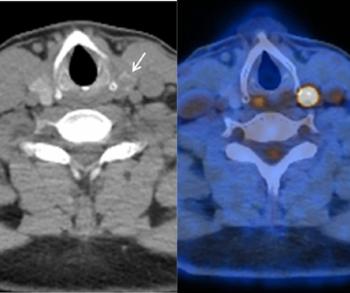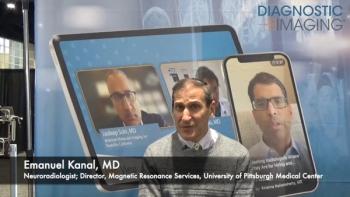
ADAC rides multihead nuclear wave
ADAC Laboratories claimed at the RSNA meeting last month to havegrown from the third-largest supplier of SPECT cameras in theU.S. to first place in 1991. According to ADAC's analysis of theU.S. SPECT market, the top camera suppliers after itself are
ADAC Laboratories claimed at the RSNA meeting last month to havegrown from the third-largest supplier of SPECT cameras in theU.S. to first place in 1991. According to ADAC's analysis of theU.S. SPECT market, the top camera suppliers after itself are GE,Siemens and Picker.
Picker, which acquired independent SPECT vendor Ohio Imagingtwo years ago (SCAN 9/13/89), also saw its market position grow,while GE and Siemens were down, according to ADAC.
This analysis may not indicate future trends, however, sinceboth GE and Siemens were relative latecomers to the growing multidetectorSPECT niche. Both firms introduced their first multihead camerasat the 1991 Society of Nuclear Medicine meeting in Cincinnati.
ADAC saw its nuclear medicine sales decline in 1990 from theirhigh point in 1989 but recovered position last year.
"Perhaps the market's best kept secret is that ADAC isnow the leading supplier of SPECT cameras in the U.S.," saidpresident Stanley Czerwinski. "This is quite a change fromwhere we were in 1989 and especially from 1990, when we were atbest number three."
The nuclear medicine market received a boost from increaseduse of the modality in screening for more expensive interventionalprocedures. Much of this activity has been in cardiac applications,he said.
"Cardiac studies are now the largest application in nuclearmedicine in the U.S., accounting for almost 40%," Czerwinskisaid. "Bone, lung and gastric studies have remained constantfor the last couple of years. They represent another 40% of themarket. Despite the constant talk of threats of incursion by othermodalities, nuclear medicine continues to flourish because ofits value."
The second market dynamic in nuclear medicine is the increaseduse of multihead cameras, largely at the expense of single-detectorsystems. Multihead systems have grown from less than 10% of theU.S. SPECT market to more than 25% over the last two years, hesaid.
"The reason for this is that the multihead (camera) hasthe ability to provide superior performance in the top applicationsof cardiac, bone and lung (imaging)," Czerwinski said.
BRIEFLY NOTED:
- Demand from U.S. hospitals for high-end ultrasound systemsappears to be moderating, according to Albert W. Rice, J.P. MorganSecurities analyst. Without new technological breakthroughs, suchas the introduction of color-flow Doppler and improvements ingray scale during the last decade, annual growth in the ultrasoundmarket will drop to around 10%. This is considered a sustainablegrowth rate for this technology.
Worldwide, Toshiba retains a dominant (19%) market positionin 1990, largely through its full-line ultrasound sales in Japanand Europe. U.S. leaders Acuson, ATL and Hewlett-Packard followin a second tier, with worldwide market shares hovering around14% for each vendor (see chart).
Leading multimodality vendors GE and Siemens--including Siemen'sQuantum ultrasound subsidiary purchased in early 1990--held 3.8%and 4.2% of the ultrasound market, respectively.
Newsletter
Stay at the forefront of radiology with the Diagnostic Imaging newsletter, delivering the latest news, clinical insights, and imaging advancements for today’s radiologists.



























